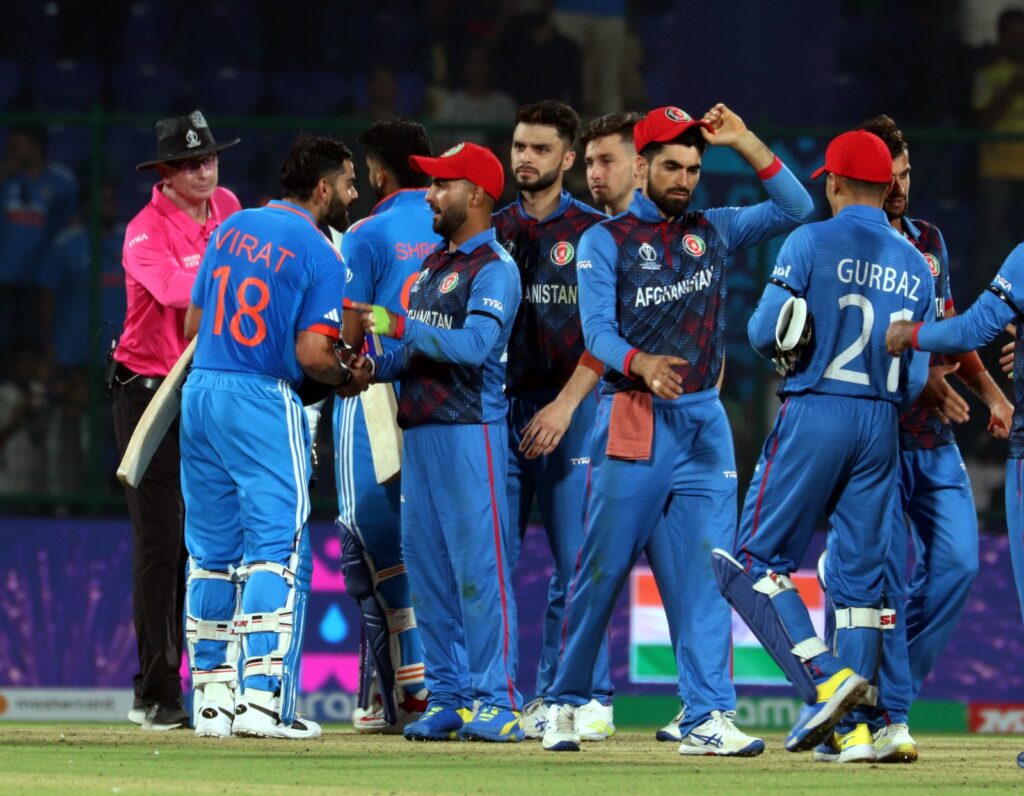
Other than four points, the first two matches of the World Cup have been productive for India in another respect. They got to assess themselves in contrasting conditions. The pitch for the first game was slow and offered a turn. The second was a belter, where bowlers did not have much of a chance.
In a long tournament where few things other than the heat will remain constant except for when they are in Dharamsala, India will face such changes from time to time. They are the only team which plays league games at nine different venues. This makes it important for them to develop this habit of being ready for whatever is on offer.
So far, India have adapted to the changes, including a forced one in team composition. They have not let Shubman Gill’s absence affect their performance. The spinners led a concerted bowling effort against Australia in Chennai, and the batting unit finished the job after early alarms.
The bowlers were not as good on the flat deck of Delhi against Afghanistan. Yet, they restricted the opposition to something below par, before Rohit Sharma commandeered a demolition job with the bat. The bowling in certain phases of the innings, and when it comes to a few individuals, ought to be better. But as a whole, the team adjusted to the dissimilar conditions without much fuss.
The pitch and weather for the next match against Pakistan in Ahmedabad are likely to be similar to Delhi. The same can be said of Pune. Dharamsala will present a total change in climate and a slightly different surface. The temperature will rise in Lucknow, where there might be a slow turner. Mumbai, Kolkata and Bengaluru will again see variations in pitch soil and the size of the grounds.
Among other things, the team that performs consistently irrespective of these variables stands a better chance. May not be by design, but this diversity in surroundings is a feature of the all-play-all league. This format is more challenging in India because of the higher number of venues. Four years ago in England, for example, India had nine league games in six stadia.
From the point of view of batters, things have clicked by and large. They were three down for two against Australia. But the batting unit eventually succeeded in finishing it off for the loss of four wickets. Rohit, Virat Kohli and KL Rahul have played long innings. Ishan Kishan and Shreyas Iyer spent time in the middle after collecting ducks in the first game. In all, India have lost just six wickets.
The bowlers have taken 20 scalps without going for plenty. Jasprit Bumrah is nearing his best. As a unit, they have been successful. Having said that, the team management would like to see Mohammed Siraj do better. Bumrah’s first-choice new-ball partner has a solitary wicket with an economy rate of 6.58. Hardik Pandya’s economy rate is 7.10. These are areas of concern ahead of the Pakistan match.
Similar issues can pop up at any stop. A team cannot look up to a few all the time. Everyone has to be prepared to step up when the day comes. Solving a range of problems collectively on a regular basis is one way of doing that. The more diverse the platter, the better.
On that count, India have made an encouraging start. Not many questions can be raised. Some vital cogs are working. A few need attention. That’s a good sign. Finding out the areas needing correction early on and not peaking too soon is important in a long tournament.




